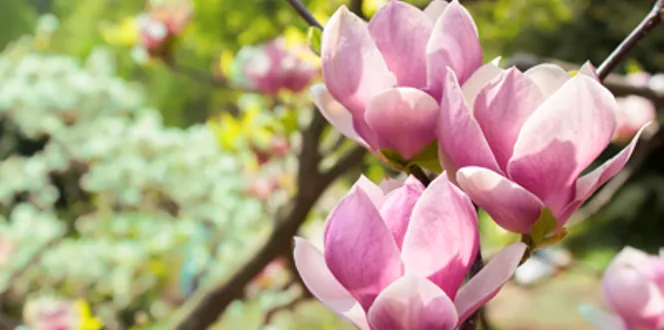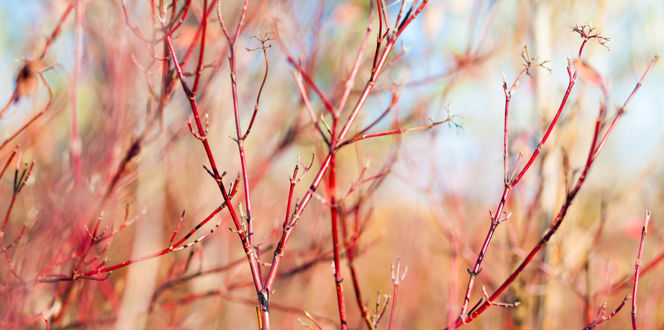Just when you were ready to close up the garden shed for winter, we’re here to tell you there are actually some ideal tasks that can be done during these colder months to benefit your overall landscape health and aesthetics.
Late winter and early spring are actually the ideal times to prune many deciduous trees. This timing works best because these trees stop their active growth and hunker down for the cold weather. Trimming during this dormant period allows trees to put their energy toward producing new, healthy growth when warmer temperatures return.
But not all trees fit this criteria.
Let’s look at important facts about winter pruning, specifically for young trees, fruit trees and spring flowering trees, so you can gain a better understanding of how to keep your trees in prime health.
Benefits of Winter Pruning
There are actually a lot of great benefits of winter pruning for amplifying the shape, growth, and look of trees in your yard.
- Winter pruning is great for visibility. You can see the tree’s entire branch structure without all of the leaves being present.
- Pruning dead, diseased, or broken branches boosts their safety by decreasing any chances of fallen limbs.
- Pruning can help shape growth in a healthy direction and control the overall size of your tree or shrub.
- Pruning helps trees withstand storms, high winds, and heavy ice and snow.
- Winter pruning can improve a tree’s air circulation.
- Pruning cuts heal faster when made during cooler months.
- Colder temperatures can help keep insects and diseases from taking advantage of pruning cuts as they are healing. These tree invaders are also less present during this time of year.
Is It Safe to Prune Young Trees in Winter?
Dormant pruning is actually great maintenance for young trees.
To develop a strong structure, young trees can be trained for proper growth. If young trees aren’t pruned or pruned incorrectly, they could risk becoming deformed or misshapen.
Is Winter a Good Time to Prune Fruit Trees?
Trimming fruit trees in winter actually encourages them to be more productive, encouraging spring flowers and summer fruit. After all, proper pruning encourages a plentiful supply of new fruit-bearing limbs, which is what you’re after with fruit trees.
Since fruit needs sunlight to ripen, pruning can open the tree canopy to let more light in. Fruit trees tend to be susceptible to fungal problems, so increasing airflow through their canopies by pruning excess branches also helps reduce these issues.
Should You Prune Spring Flowering Trees and Shrubs in Winter?
Now that we talked about some ideal winter pruning benefits, we have to review the trees and shrubs that might not respond best during this trimming timing.
Generally, trees and shrubs that bloom on new growth are ideal for winter and early spring pruning, while you should trim those that bloom on old growth -- like flowering trees and shrubs -- in late spring or summer after their flowers fade. This is to ensure you don’t remove their buds and lose blooms for the season.
There is one exception: You can prune flowering trees and shrubs that bloom after the end of June in winter or early spring before new growth emerges.
We know pruning can be intimidating because there are a lot of rules to follow. Whether you are pruning young trees, fruit trees, or flowering trees in your yard, you can always ask your local arborist for advice and assistance in getting this job done right.





